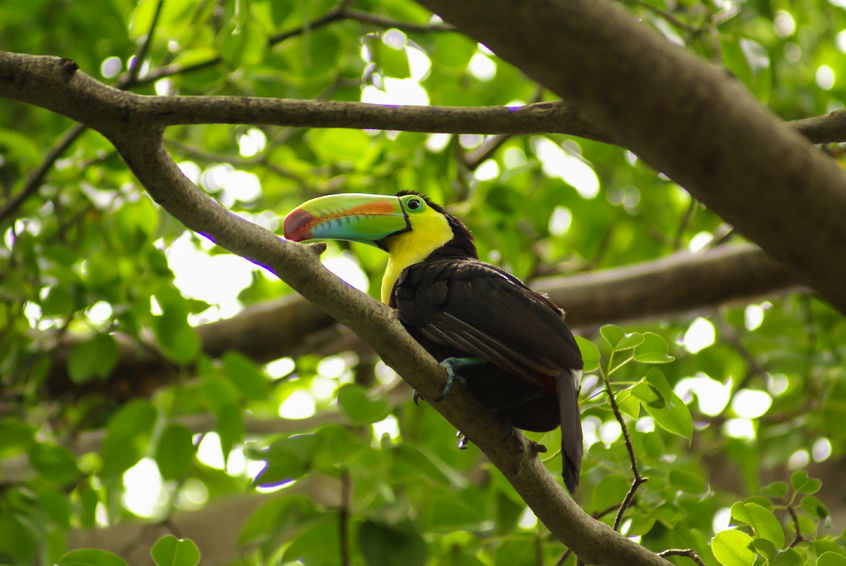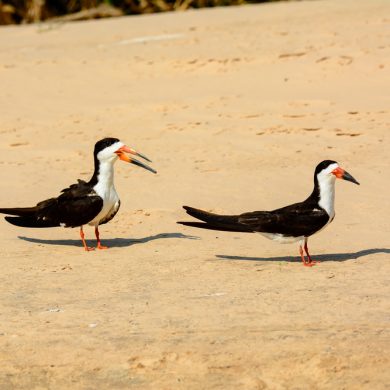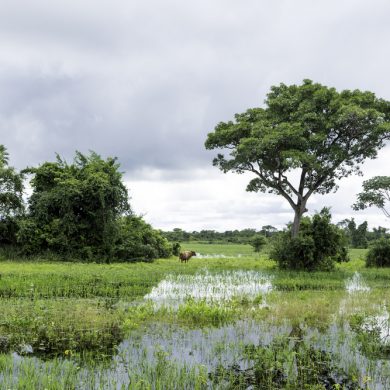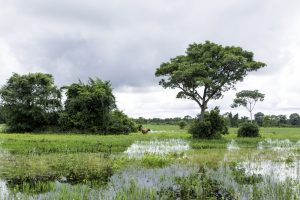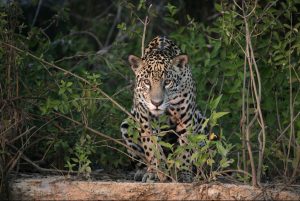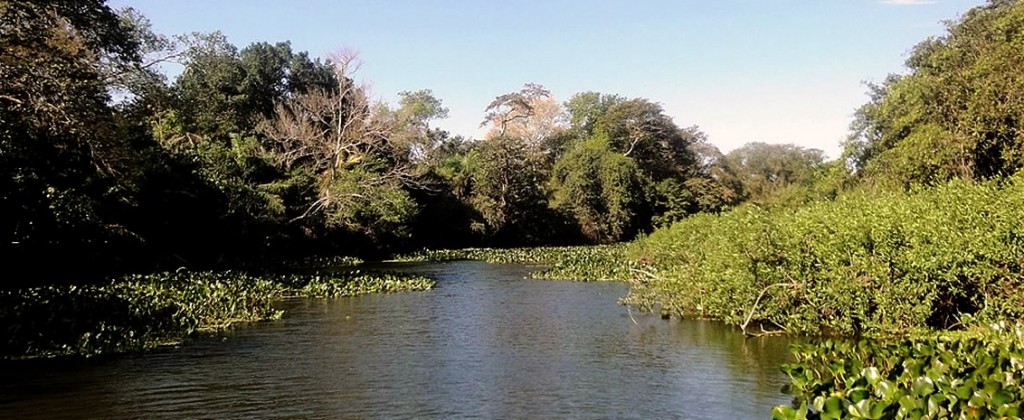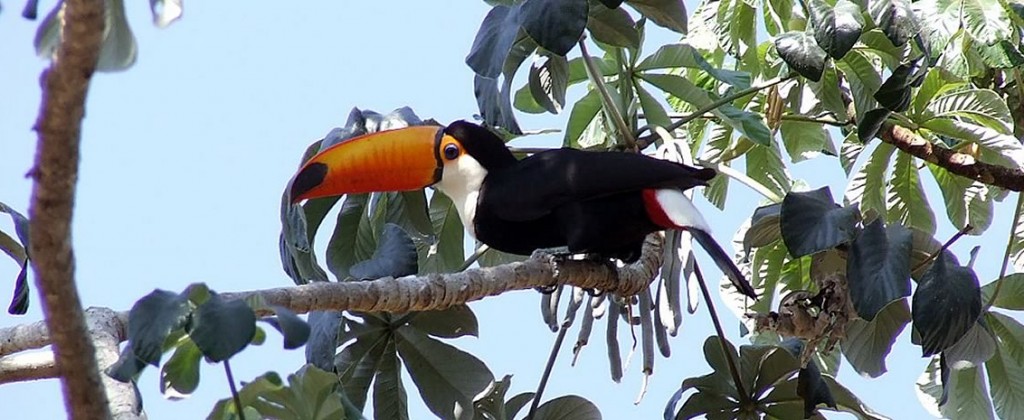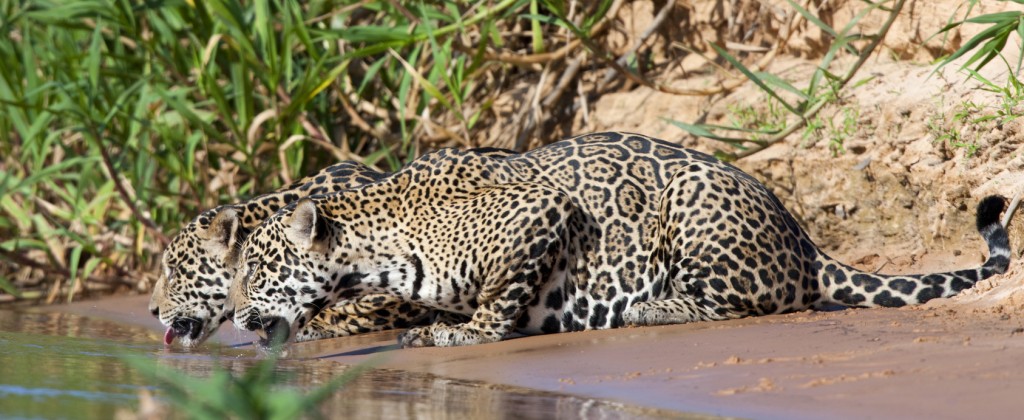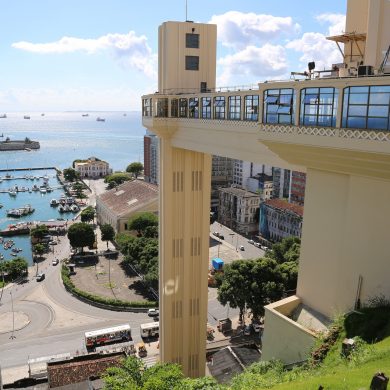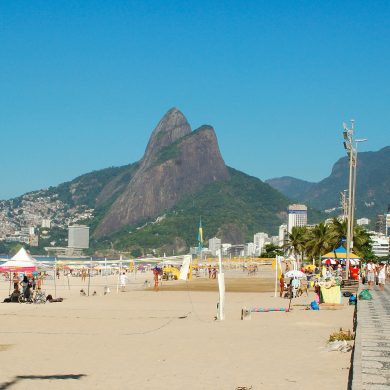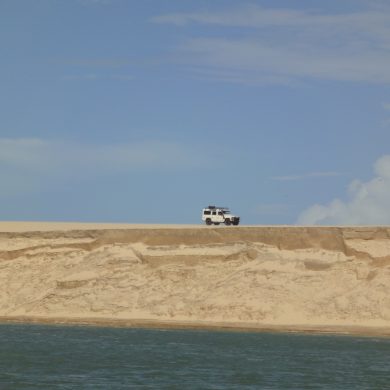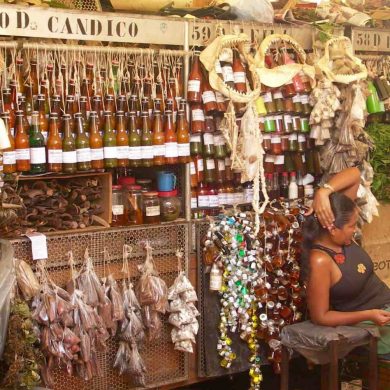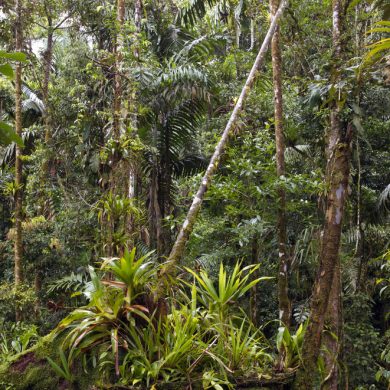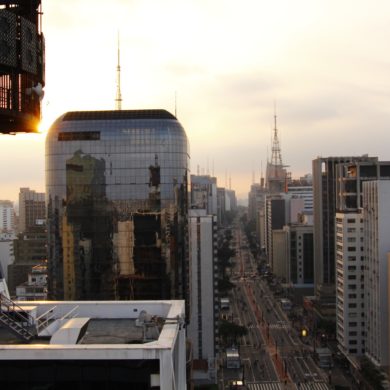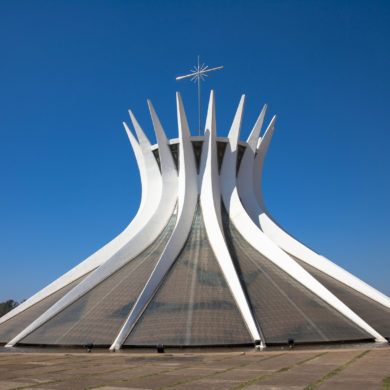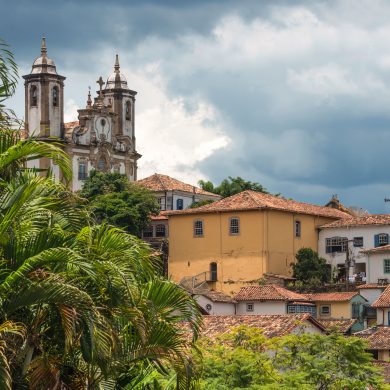Over more than 200 000 km2, the Pantanal is an immense region housing the richest biodiversity in the world. Here you will experience a unique stay in the heart of a wild and preserved place still relatively untouched by Man.
Only one other destination in Brazil has claim to, such a title: The Amazon. The giant rainforest often overshadows this extremely rich wetland whose fauna and flora are in reality, unmatched. The Pantanal’s unique topography is characterized by a vast marshy plain that gradually transforms into giant lakes dotted with islands during the rainy season. It is absolutely teeming with wonderful animal life.
Take one of our Pantanal tours, where you will cross this immense “pantano” (marsh) of flooded land and rivers and feel the privilege and magic of being able to visit the heart of the most varied ecosystem on our planet. This exceptional treasure has been listed as a world heritage site by UNESCO since 2000. A Brazilian vacation package for those nature lovers who truly want to immerse themselves in the wild.
Our Pantanal Tours Packages
Browse our Pantanal Tours
The Pantanal, Brazil’s best kept secret . . .
Visit the richest habitat on earth at Pantanal
Undoubtedly one of the most beautiful natural regions you will ever see, Pantanal is almost totally covered by low lying vegetation and so the views are absolutely incredible.
A wildlife photographers dream, Pantanal is perfect to observe and capture nature on camera. The big cats, (jaguar) are among the most popular attractions. If you hope to see wild animals such as the jaguars, sloths, anteaters and caimans, you are in the right place. This interior region of Brazil is the largest wetland on the planet, and will completely change your perspective on wildlife.
Our Pantanal tours are a chance to admire the extraordinary beauty of life…
Criss – crossed by calm and winding waterways, this vast marshy savannah that is the Pantanal, transforms itself each year into an enormous freshwater lake that floods most of the region.
With the landscape changing every season, an everchanging natural spectacle is on display throughout the year. This phenomenon plays an essential role in the region’s ecology. The filtration capacity of this enormous plain is critical for the survival of the plants and animals who are totally dependant on this fragile ecosystem.
The fauna and flora of the Pantanal are among the richest in the world according to scientists and remain largely unknown to this day, resulting in constant research expeditions in the area. You can observe the hundreds of bird species of the area including the American Jabiru, a great endemic wader that is also the symbol of this region. Maybe you will get a chance to see the legendary Ara Hyacinth, also known as the Blue Ara, the largest parrot in the world and whose population has sadly dwindled to only 3000 wild birds today.
Discovering this region on a Pantanal tour, is like unlocking planet Earth’s most hidden wildlife secrets, a unique vacation for those who have the chance to experience it.
Explore North Pantanal and encounter the mythical jaguar
The relative isolation of the Northern Pantanal region, and the unique ecosystem found in the Mato Grosso state, makes it an exclusive destination. It will delight all adventurous souls and nature lovers in search of a bold and original getaway.
This region is new to human presence and even more so to tourism. Due to the unique animal species found here, tourism is essentially concentrated around observing the animals from land or water. This may be on foot or horse, in a vehicle or in small boats. You can reach Northern Pantanal via Cuiabá, the regional capital that has an airport linking it to the main cities in the country. The lodges or fazendas (farms) selected in our packages are located along the Transpantaneira, a dirt road that crosses the Pantanal. This is the wildest region and it is here we suggest staying to observe the mythical jaguar. Due to its isolation, this true sanctuary is also the most likely place to see other rare and wild animals such as the marsh deer, the giant otter, and the anteater. You may even spot a Brazilian tapir.
The standard tour of North Pantanal lasts 3 days. You set off along the Transpantaneira which crosses the region from the town of Pocone to Porto Jofre 150km away. After 70km, you stop at the Santa Tereza pousada in the very heart of Pantanal. Located on a Fazenda (farm), the pousada will serve as base camp from which to go exploring the local habitat. Here, it is especially rich in birdlife with more than 650 species in the area. Boat trips, excursions, night safaris in 4X4s and bird watching are all on the program!
Visit South Pantanal, as close as you can get to the wildlife!
South Pantanal, is the southern part of the state of Mato Grosso do Sul. A little easier to get to and therefore more developed than the northern part, it is reached via Campo Grande. Here it is also easier to meet the local people and see how they live in this wild region.
The main local activity is agriculture, and accommodation is mainly on enormous farms or ranches that have been partly transformed into lodges to welcome passing tourists. Mostly plain but very comfortable, they boast local cooking and the delicious specialties of the Southern Pantanal.
For our Southern Pantanal Tours, we have selected accommodation in an authentic local farm of more than 15 000 hectares which welcomes tourists to a very comfortable stay, the fazenda São Francisco. On the farm you will be able to go on excursions in small groups with nature guides, and other activities such as canoeing, horse riding, 4×4 and nocturnal safaris, boat trips and even piranha fishing are all available.
Because it’s easier to get to the South of Pantanal, organising excursions and accommodation is easier too, so tourism here is more conventional than in the north. With this Pantanal vacation package, you can discover this wild part of the country without running into difficulties, ideal if you have children for example.
Top Pantanal FAQs
When is the best time to travel to Pantanal?
The best time to visit Pantanal is from April to October, when there is less rain and the water levels come down. The best months for wildlife spotting are between July and October, when the lakes and rivers have started to dry out and shrink, so most of the wildlife moves towards the edge of the remaining water. At night during these months, temperatures can drop as far down as 10°C / 50 °F, so come equipped! The rainy season from November to May is the best time to see the flora in full bloom and to travel into the more inaccessible parts of the marshes by boat.
What do you need to travel to Pantanal?
Remember that the Pantanal is a wetland. Your aim is to stay dry, cool and comfortable while keeping the mosquitos at bay. Depending on what time of the year you are going and which activities you plan on doing, you should prepare accordingly. If you go in the months between November and May (the rainy season) then you should have at least a good rain jacket, waterproof footwear and waterproof trousers. Make sure your footwear has good grip on the soles for walking on slippery ground or getting in and out of boats. During the dry season, you may not need to use your waterproof gear but it is best to have it anyway.
Luggage Bags
We recommend using rucksacks and duffle bags for travelling to Pantanal as oppose to hard – shell suitcases. First of all, hard – shell suitcases tend to damage easily, also they can be brittle and difficult to store when there is limited space, such as on a boat.
Gear
We recommend sunglasses and binoculars for traveling to Pantanal. Binoculars are useful for wildlife spotting and bird watching, as well as getting a closer look at some of the features of the magnificent landscape. Bring spare memory cards, chargers and batteries for phones and cameras in case something gets lost or broken.
It is also a great idea to bring waterproof zip – lock bags for small electrical items and make sure your documents (passports, boarding passes) are in plastic covers as well. You will definitely need plenty of insect – repellent and sunscreen.
What are the top places to see in Pantanal?
Most people come to Pantanal to see the extraordinary display of wildlife. The diversity of fauna and flora here is unlike anywhere else in the world. Due to the exceptional environment, UNESCO made Pantanal a World Biosphere Reserve in 2000.
North Pantanal
Northern Pantanal is an ecological and wildlife sanctuary. You can reach northern Pantanal by flying to Cuiabá than taking a transfer to Poconé. This is where the Transpantaneira begins, the only track that crosses the Pantanal national park. From your accommodation, you can leave by 4×4 or on horseback to discover one of the richest eco systems on the planet. You can spot caimans and giant otters from the river banks as well as tapirs, deer, capybara and parrots. Take a trek at dawn as well to witness the sunset and go nocturnal wildlife spotting!
Jaguar Safari
If you are traveling in the Pantanal, it is likely that you will want to spot the most sought after beast in the area – the mythical jaguar. Luckily, there are special jaguar safaris that you can do just that, most guarantee quite a high chance of seeing a jaguar in the wild. In addition, the guides will help you spot much more of the wildlife along the riverbanks as well as advising you on the best techniques for spotting the animals. This part of Brazil has very little people living there and is in fact one of the most wild and untamed regions in the country. You may come across “Terena” Indigenous communities, who live here in unison with nature. Ask to arrange a visit to learn more from the locals. Also, speak to the people at your pousada, most of them have lived here their whole lives so will be able to share exciting tales of living in the wild!
South Pantanal
To discover South Pantanal you need to fly into Campo Grande. Similar to the rest of the region it is heaven for animal lovers, nature enthusiasts and photographers. In South Pantanal we recommend staying on a local fazenda (farm) so you can really immerse yourself in the unspoiled environment by sampling the local way of life. Get around on horseback and by boat and feast on the regions fresh produce at your accommodation.
Campo Grande
Campo Grande is the capital of Mato Grosso do Sul and has one of the most multi – cultural backgrounds in the country. Here is the land of travellers and settlers, a mix of Lebanese, Portuguese, Japanese and local influences create an eclectic atmosphere that is not to be missed. Generations of immigrants have allowed a fantastic gastronomical culture to evolve. Lovers of meat and barbeque especially enjoy the city, Mato Grosso do Sul produces the most meat in Brazil and local chefs certainly take advantage of this!
